We make “regular” compost with regular yard waste and also leaf humus. We try not to let anything go to waste. (And we vermicompost using our food scraps to create compost for our edible garden.)
Compost
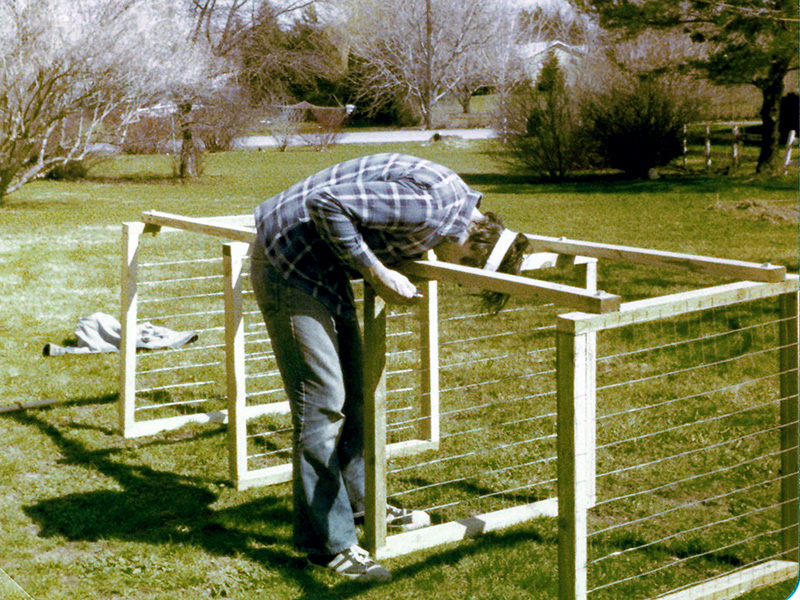
The introductory photo above shows our current compost bin.
This is our original compost bin we built at our first house. We brought it with us when we moved to our current house, and it lasted about twenty years.
John made them from the plans in Jim Crockett’s The Victory Garden book.
(And even though we’re now horrified at the chemicals Crockett recommended in growing food, we’d like to credit him with igniting our interest in gardening. We’d also like to think that if he had lived longer, he would have become an organic gardener with all the new evidence of pesticide dangers.)
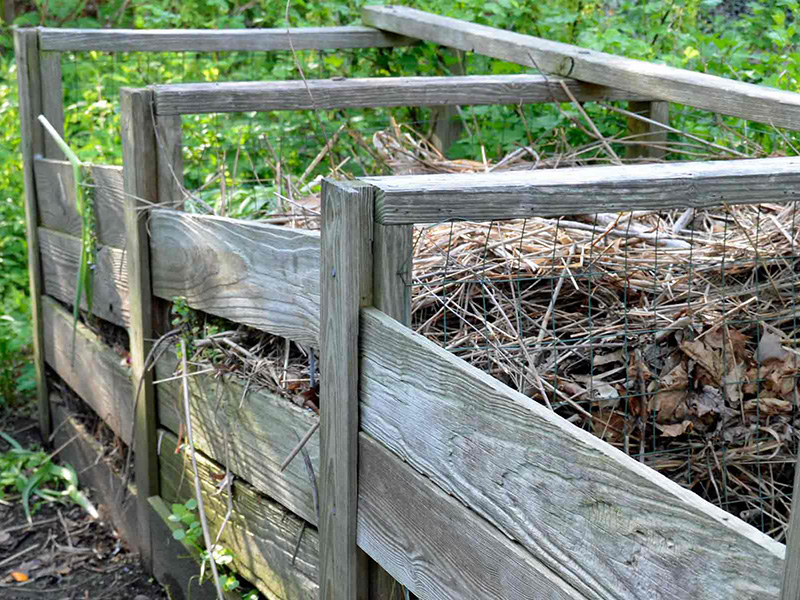
This is where we compost our yard scraps from excess clippings, weedings, and so on, especially those from our edible garden. We try to keep all the “waste” from our property on our property. The compost doesn’t go to waste, though. We can never have too much compost for our edible garden.
Another place we compost yard waste is a free-form pile I’ve created next to our screen porch.
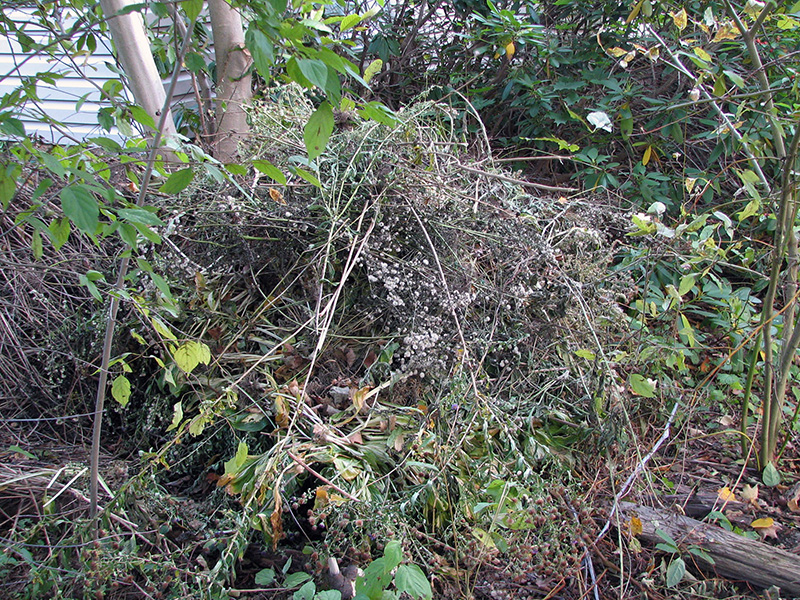
For a few years, I just threw all sorts of extra plants I’ve dug up (especially the non-natives such as daylilies and hostas) as well as excess prunings and weedings-out — basically things that were too much to just lay on the ground next to where I removed them, too much to cart around to the back yard, or just too much to add to the composter.
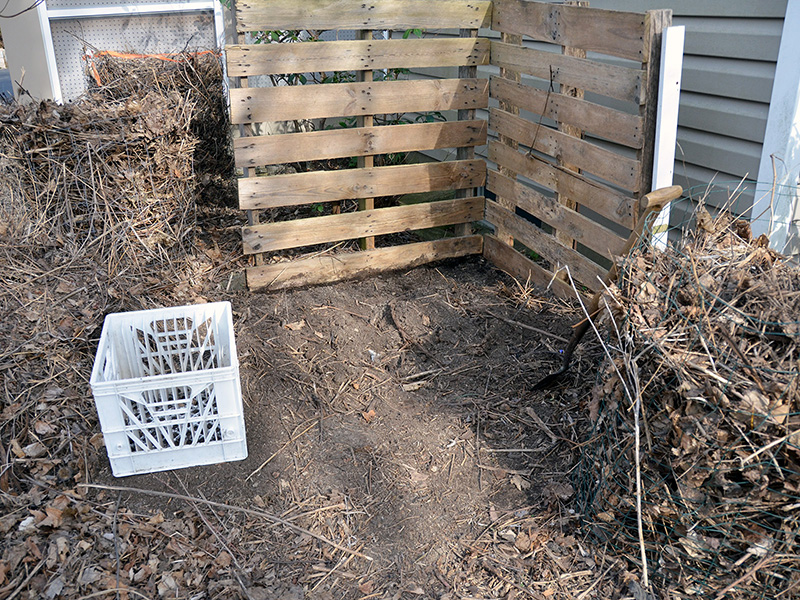
Later John created more formal bins of old wooden pallets in an out-of-the-way spot at the side of the porch.
The pictures show the bin half-finished.
As it turns out, it didn’t have a long lifespan since the wood rotted. BUT we wouldn’t have wanted a pressure-treated bin anyway…
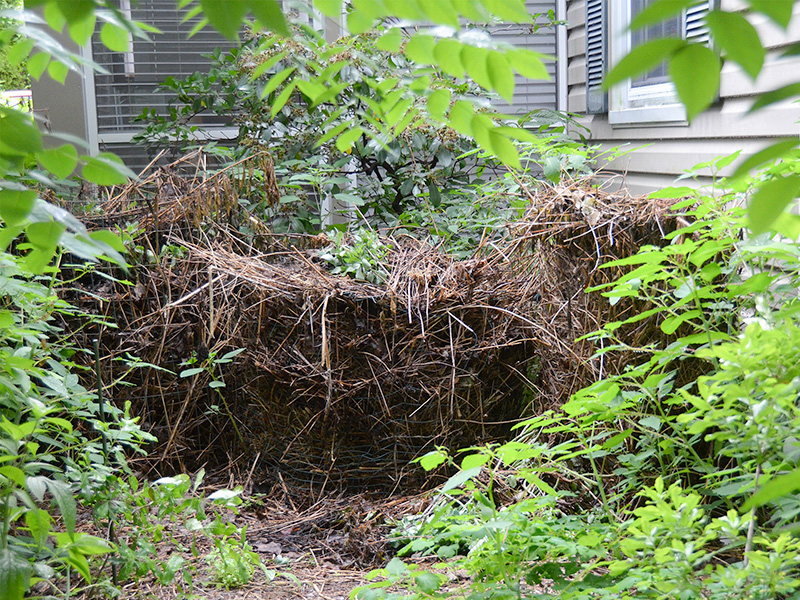
He then just made three “barrels” of wire fencing to hold my habitat garden weedings.
These seem to work just as well and they’re actually less noticeable while keeping the pile neat.
Making leaf compost
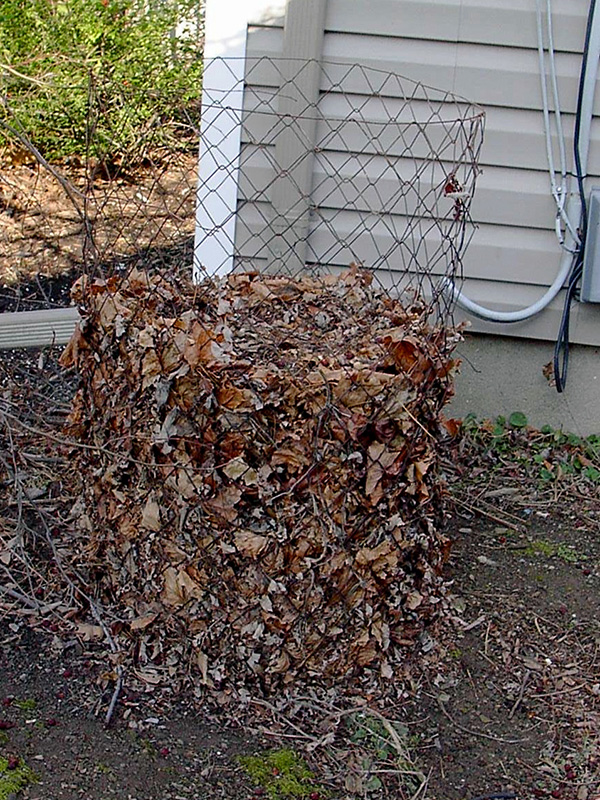
We first started putting leaves in a homemade “barrel” just as a demonstration for people who tour our yard. We wanted to show that it doesn’t take much space to compost leaves since they “cook down” so quickly.
To make one, we formed metal fencing into the shape of a barrel and bent the cut edges to hold it together. Then we just piled fall leaves into them up to the brim and waited.
After a just a few months, the leaves had already “cooked down” this far.
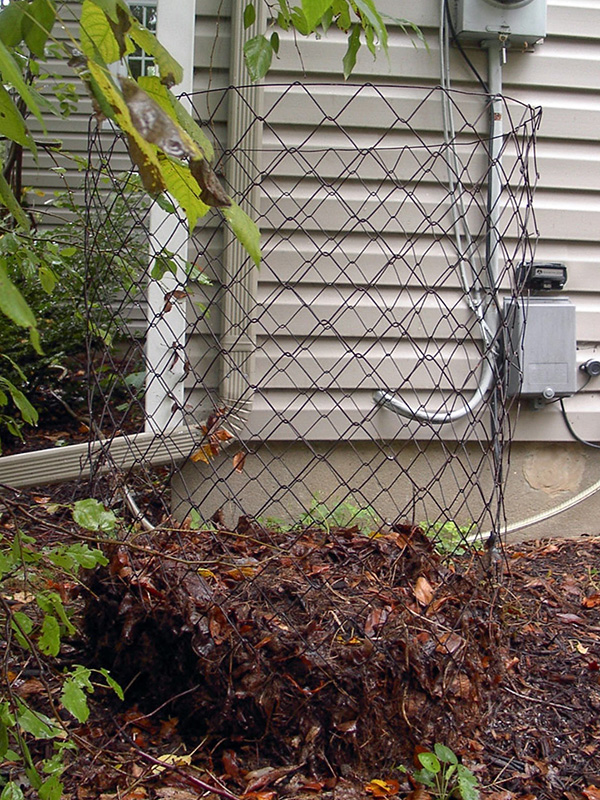
And this shows little space those leaves took up after just one year.
After two years, we had rich leaf mold.
This worked so well that we don’t use this just as a demo, but we continue adding leaves.
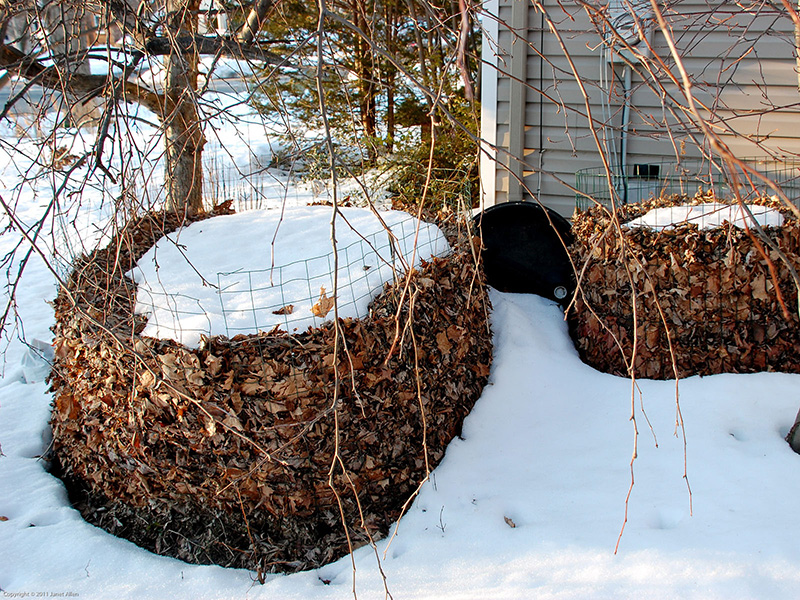
When we saw how incredibly easy it was to create large amounts of leaf humus this way, we made more barrels and put them in out-of-the-way places in the yard.
The new larger barrel is to the left of our regular-size barrel.
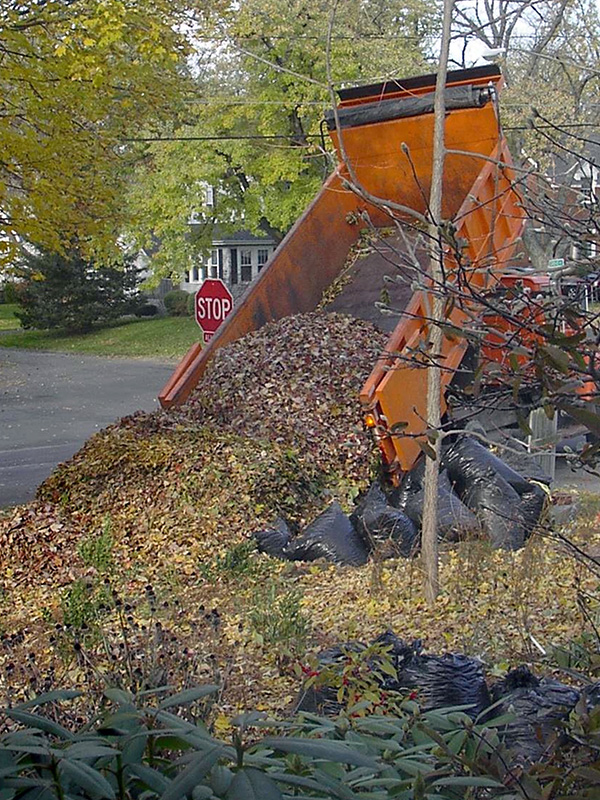
Leaves are so valuable that one year, as the town dump truck was going by, we asked the driver to dump his truck-load of leaves on our front yard. I imagine the truck driver thought we were nuts, but he did it.
We were thrilled to have so many leaves!
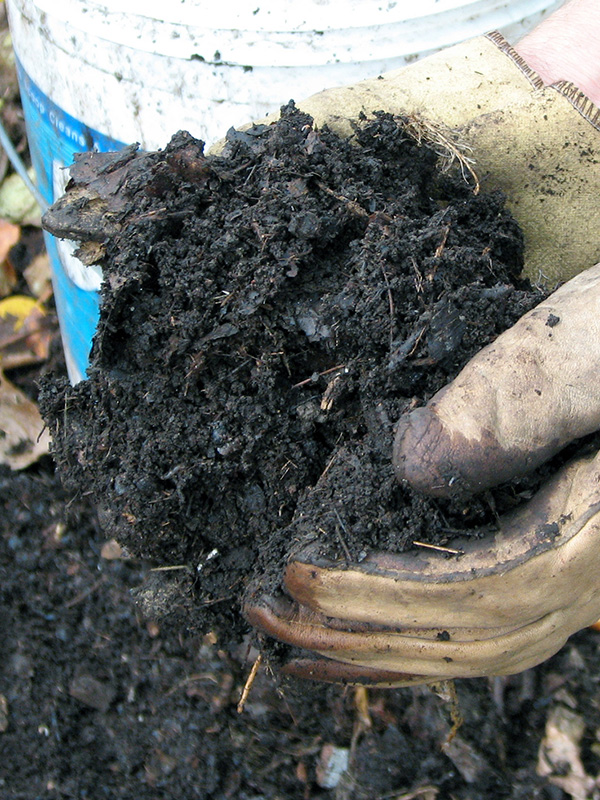
Here’s a closeup of the leaf humus from the center of the pile we’re harvesting.
This beautiful stuff consists only of leaves. We didn’t turn the leaves or anything; we just waited for them to decompose.
It would be difficult to buy leaf humus or compost this good, and if we could, it would be extremely expensive. Our leaf humus is totally free and requires very little work.
Composting with the help of worms
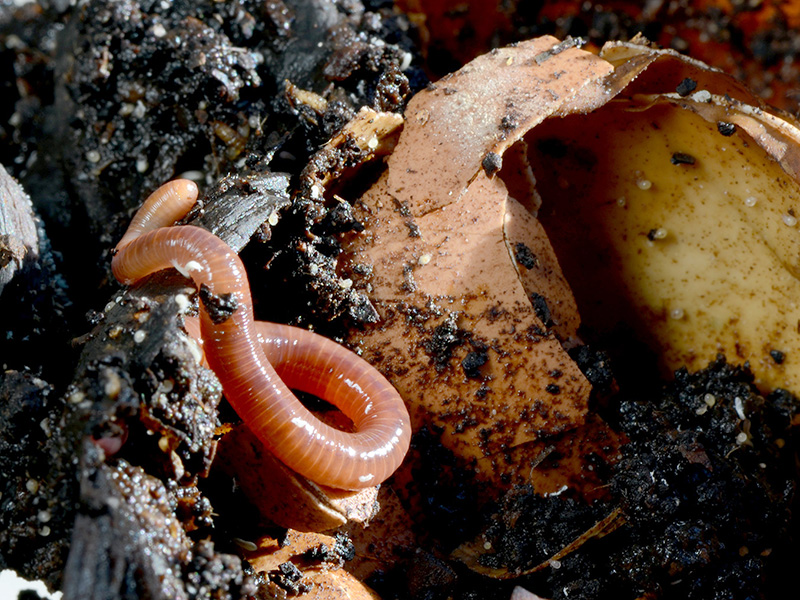
We vermicompost our kitchen food scraps in our basement. This is very rich compost since it contains its own composted manure, i.e. worm poop!
We use this compost in Our Edible Garden.
CAUTION: These worms shouldn’t go outside alive! Keep the finished compost some place that freezes during the winter before applying it to your yard! Non-native worms are destroying our woodlands!
Resources
- David Suzuki Foundation:
Reflections
Recall, before laying down a mulch of pine bark, that each bush or tree is accustomed to a cover of its own dead leaves below it, and so are the decayers that refeed it.Keep a compost pile for kitchen wastes and cornstalks, but remember that fallen leaves, dead stems, and pulled weeds left in place supply a steadier source of humus than a once-in-a-springtime dole of rotted compost.
~ Sara Stein, Noah’s Garden: Restoring the Ecology of Our Own Back Yards, p. 135
I mean to say that we should treasure the life in our garden both for the riches it holds and for the riches it sheds.I mean to say that we should respect and trust our soil as an ecosystem which, if fairly treated, will thrive with minimal interference.I mean to say that the gardener’s role is neither to take nor to give: it is to plant.
~ Sara Stein, Noah’s Garden: Restoring the Ecology of Our Own Back Yards, p. 135
